Fishers suffering from seal boom, Senate committee hears in Newfoundland and Labrador
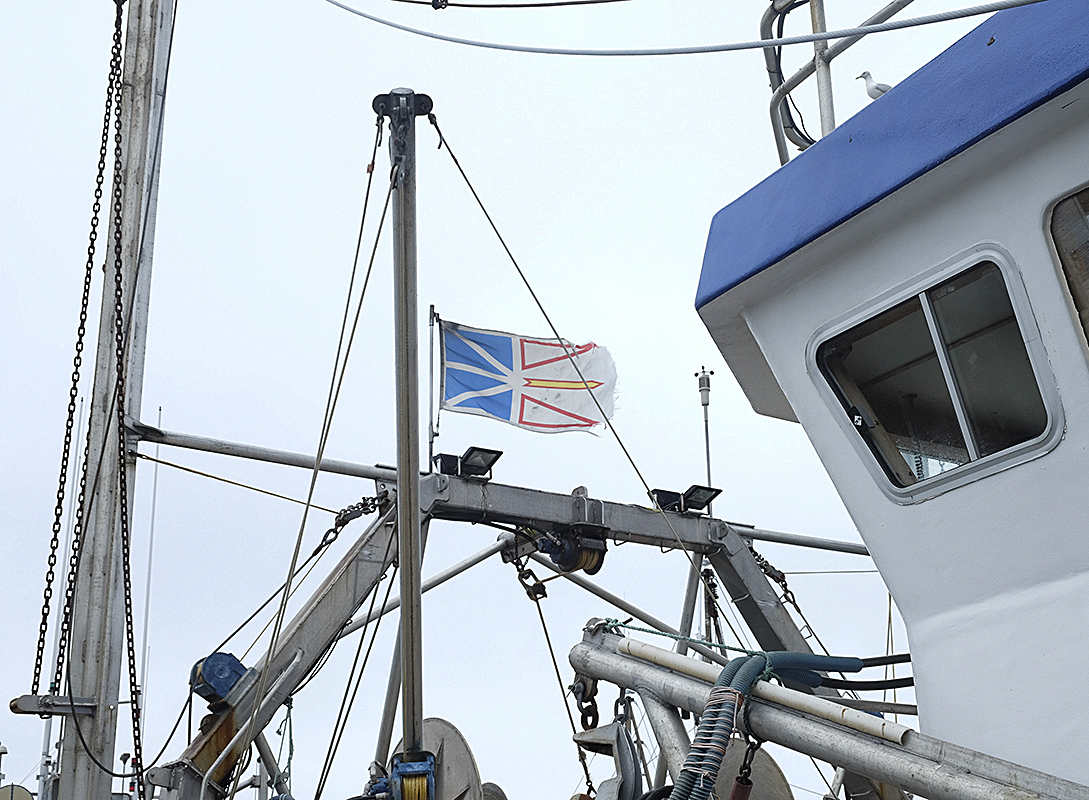
The Canadian sealing and fishing industries have been left to sink or swim while booming seal populations on the Atlantic Canada coast deplete fish stocks and disrupt marine ecosystems, the Senate Committee on Fisheries and Oceans heard on a recent fact-finding mission.
The committee took its in-depth study on the effects of Canada’s seal populations to Newfoundland and Labrador from September 11 to 13, 2023. Fact-finding activities in Elliston, South Dildo, Port de Grave and St. John’s, capped off by day-long public hearings in the provincial capital, provided senators with a detailed picture of the province’s rich history with the seal fishery and the serious challenges domestic sealers and fishers are facing today.
Senators heard that a dwindling market for seal products, a decrease in sealing and little support from the federal government over the last decade have left the sector struggling to reach its full potential. Meanwhile, the growing seal population is literally eating away at people’s livelihoods, according to testimony from government officials and representatives from across the industry.
“We need to somehow get the government to accept this responsibility and act in real time,” Dion Dakins, CEO of Carino Processing Ltd., told the committee on September 13.
“There are people depending on this.”
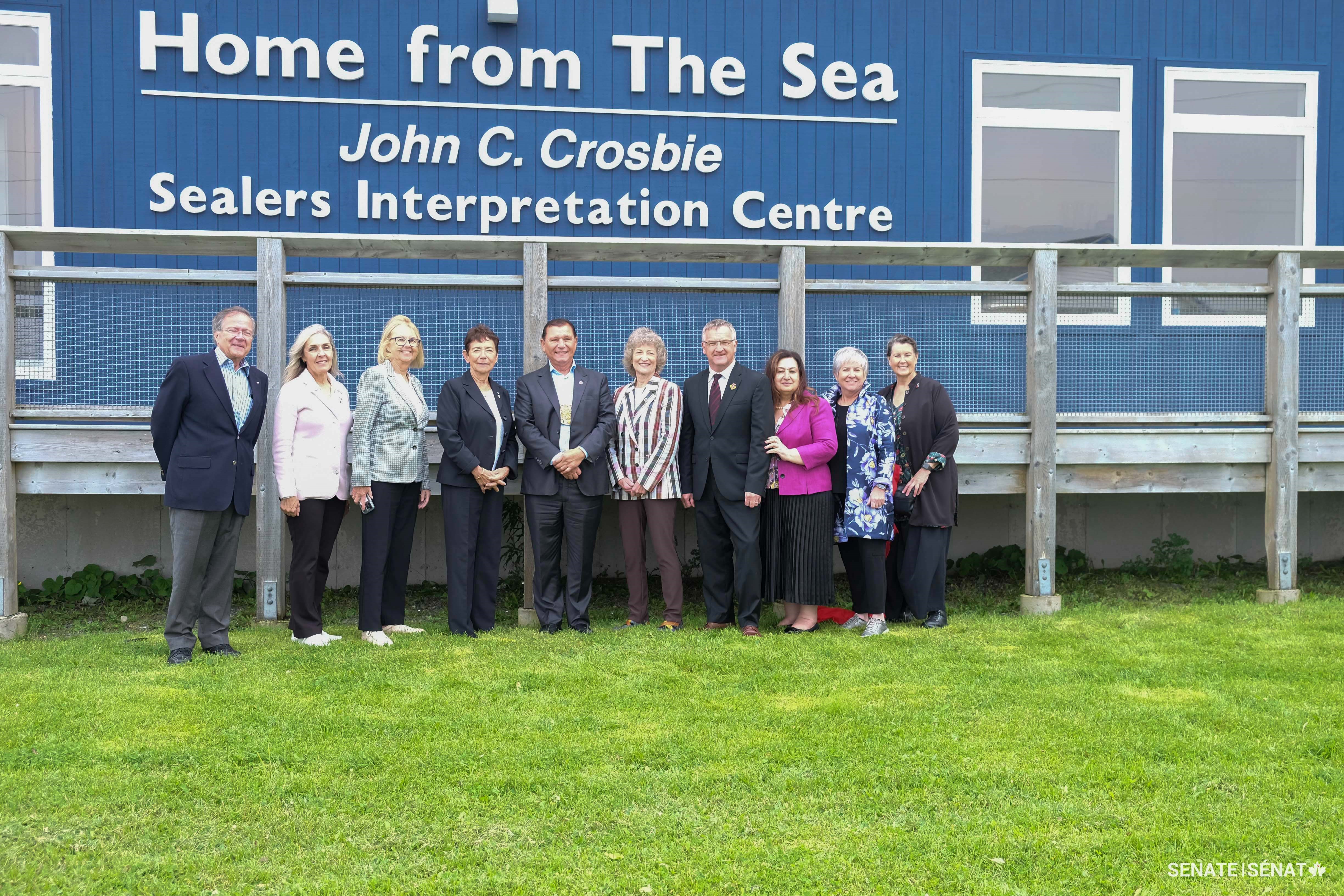
A delegation of the Senate Committee on Fisheries and Oceans kicks off its fact-finding mission to Newfoundland and Labrador with a visit to the John C. Crosbie Sealers Interpretation Centre in Elliston, a historic fishing town and settlement. From left, senators Jim Quinn, Rebecca Patterson, Jane Cordy, Bev Busson, Brian Francis, Pat Duncan, Fabian Manning, Salma Ataullahjan, Iris Petten and Marilou McPhedran.
The seal harvest has longstanding cultural, economic and ecological significance for Indigenous peoples and many Canadian coastal communities.
Since the fall of 2022, the committee has been examining how seal populations have been managed by the federal government, the most appropriate and effective ways of managing seal populations in the future, and how research priorities and funding related to seals are determined.
Other key issues and themes raised so far during the study have included:
- Existing gaps in seal science and research and outdated data collection methods related to fish stocks, seal populations and the role of seals in ocean ecosystems
- Federal and provincial investment in Canada’s seal products industry
- Technologies that can help track seals and their interactions with other species
- How climate change is affecting seal populations
In the year leading up to its fact-finding mission, the committee heard testimony from approximately 30 witnesses, including representatives from different federal departments and agencies, as well as scientists and researchers.
But heading to Newfoundland and Labrador offered senators the opportunity to hear directly from the people, communities and businesses adversely affected by growing seal populations — and to make a bonus visit to Discovery Collegiate in Bonavista to discuss their study with students learning about the Senate.
At the John C. Crosbie Sealers Interpretation Centre and the Sealers Memorial Statue and Monument in Elliston, senators deepened their understanding of the seal industry’s economic and social importance to the province, as well as the painful chapters of its long history.
Senators saw a key part of the seal products industry in South Dildo and witnessed the transformation of various seal products — including pelts and oil — before travelling to Port de Grave to meet with the local harbour authority.
The committee capped off its fact-finding mission with a day of public hearings held in St. John’s, during which it heard testimony from a range of witnesses, including provincial and Qalipu First Nation representatives and individuals who work in the seal fishery and the seal products industry.
Through witness testimony, senators heard that the total number of seals harvesters are permitted to catch annually hasn’t been reached for many years. Meanwhile, experts told senators, seals are eating about 22 times more fish than the total amount being harvested by commercial fisheries.
“Seals need to be managed effectively as part of an ecosystem-based approach to fisheries management,” Morley Knight, fisheries consultant and former assistant deputy minister of fisheries policy at Fisheries and Oceans Canada, told senators in St. John’s.
The committee will continue its study in the months ahead and will produce a report at the conclusion of its investigation, detailing its findings and recommendations to the federal government.
“We need the Canadian government to decide if it is in or out,” Bill Penney, head of business development at Mi’kmaq Commercial Fisheries, testified on September 13.
Visit the committee’s webpage for updates or follow the committee on social media using the hashtag #POFO.
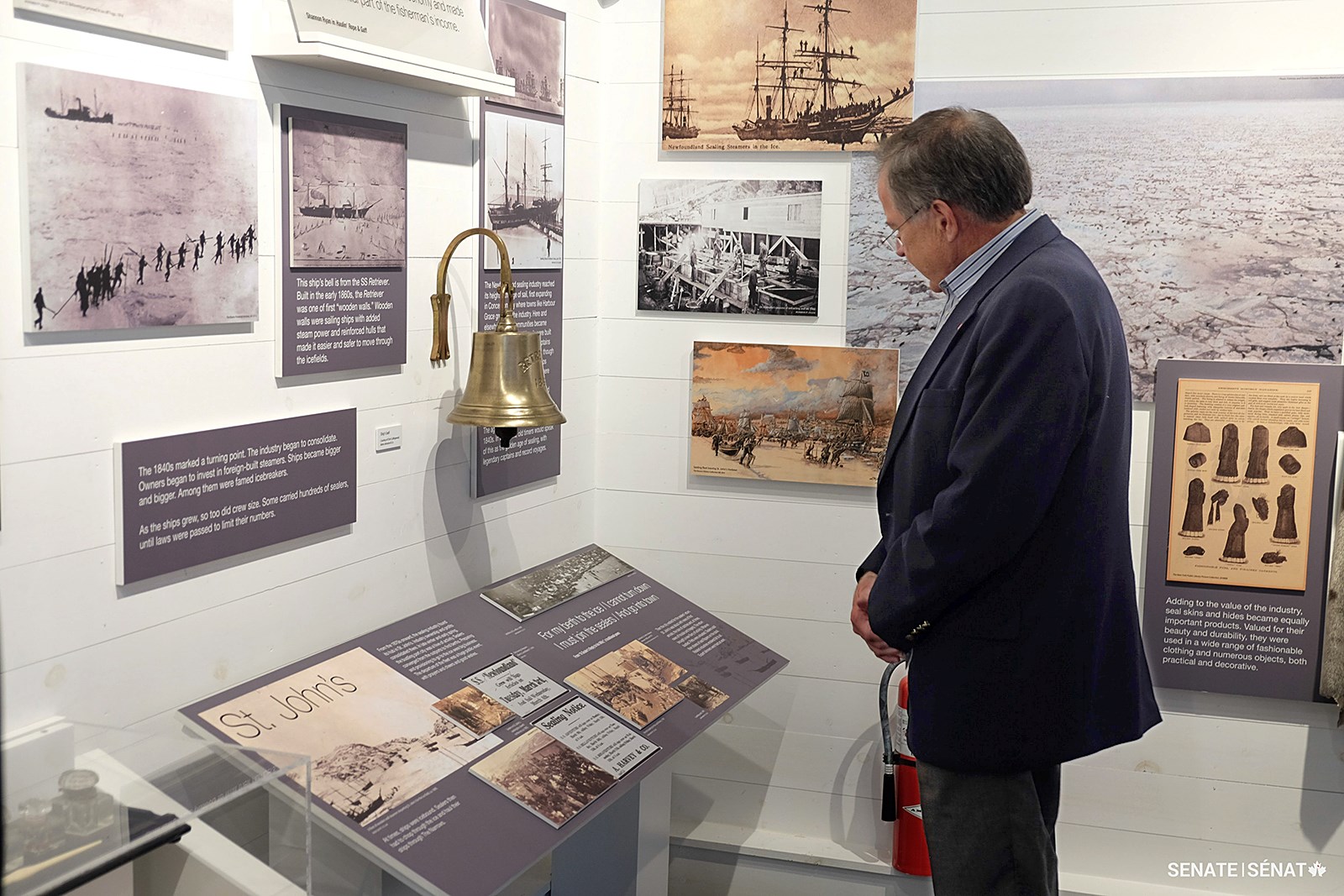
Senator Quinn dives into Newfoundland and Labrador’s long and rich history of seal fishing at the John C. Crosbie Sealers Interpretation Centre.
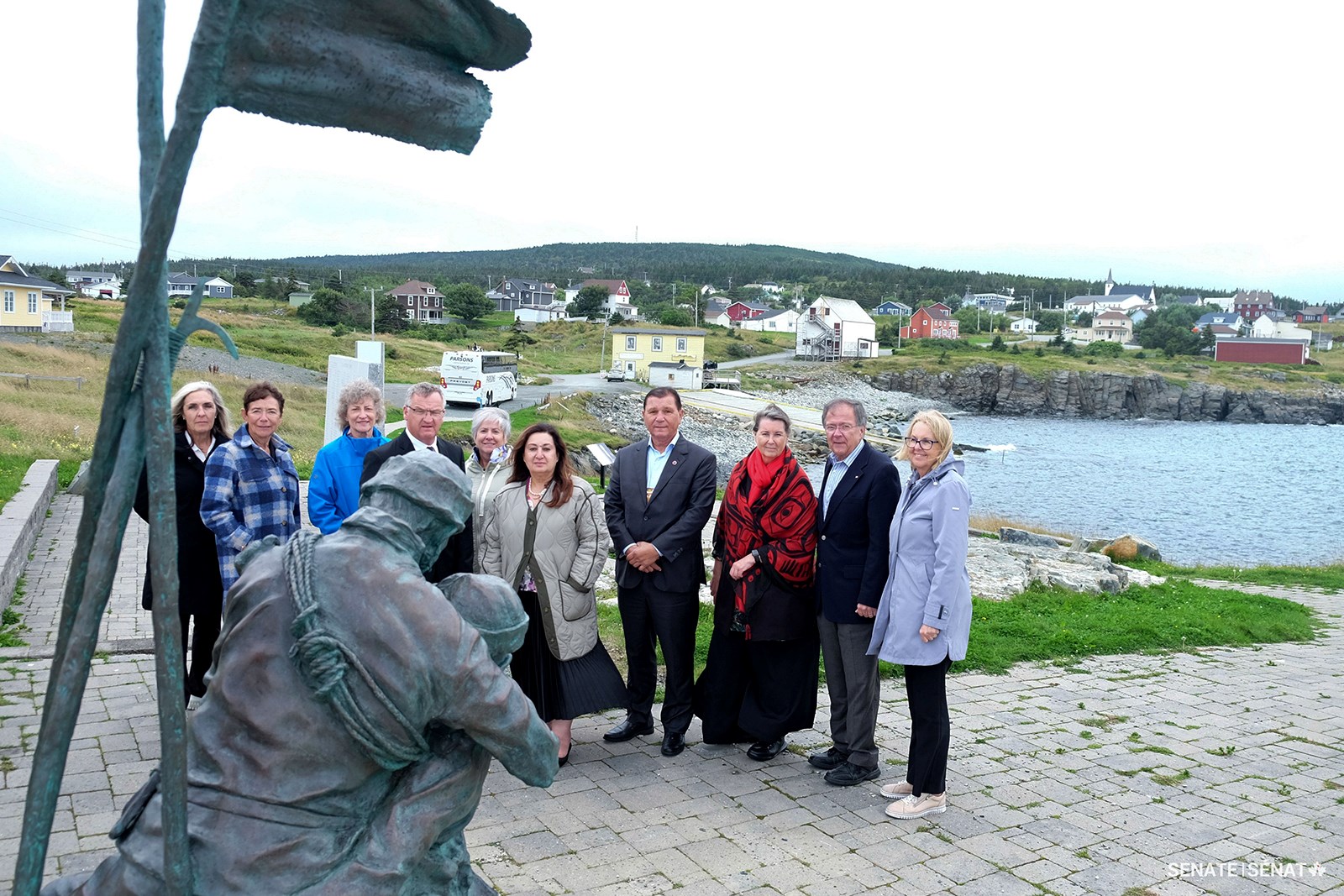
During a visit to the Sealers Memorial Statue and Monument in Elliston, senators learned about the disaster of 1914 that claimed the lives of 251 sealers.
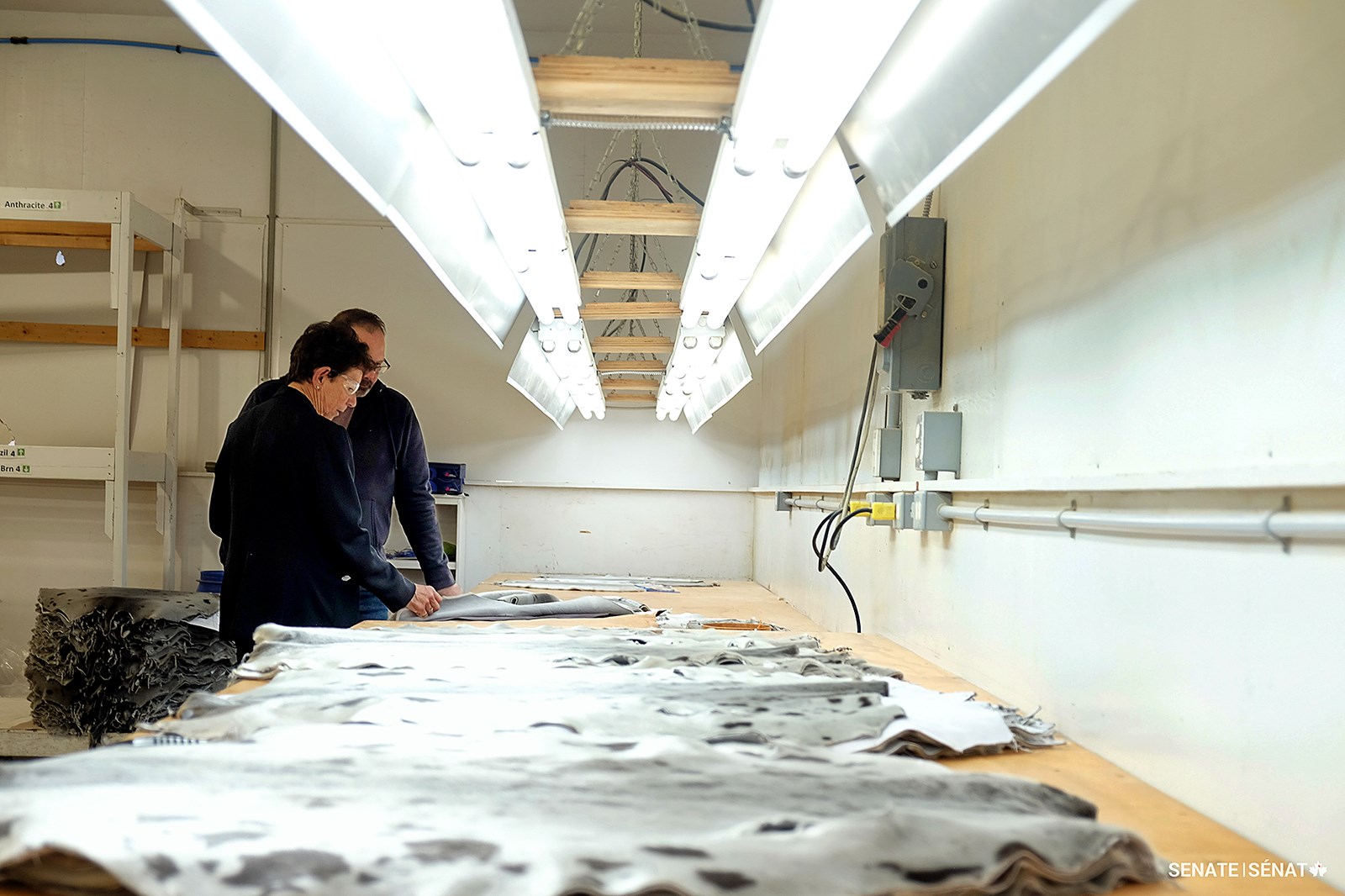
Senator Busson learns about the production of seal pelts and other products at the Carino Processing Ltd. facility in South Dildo.
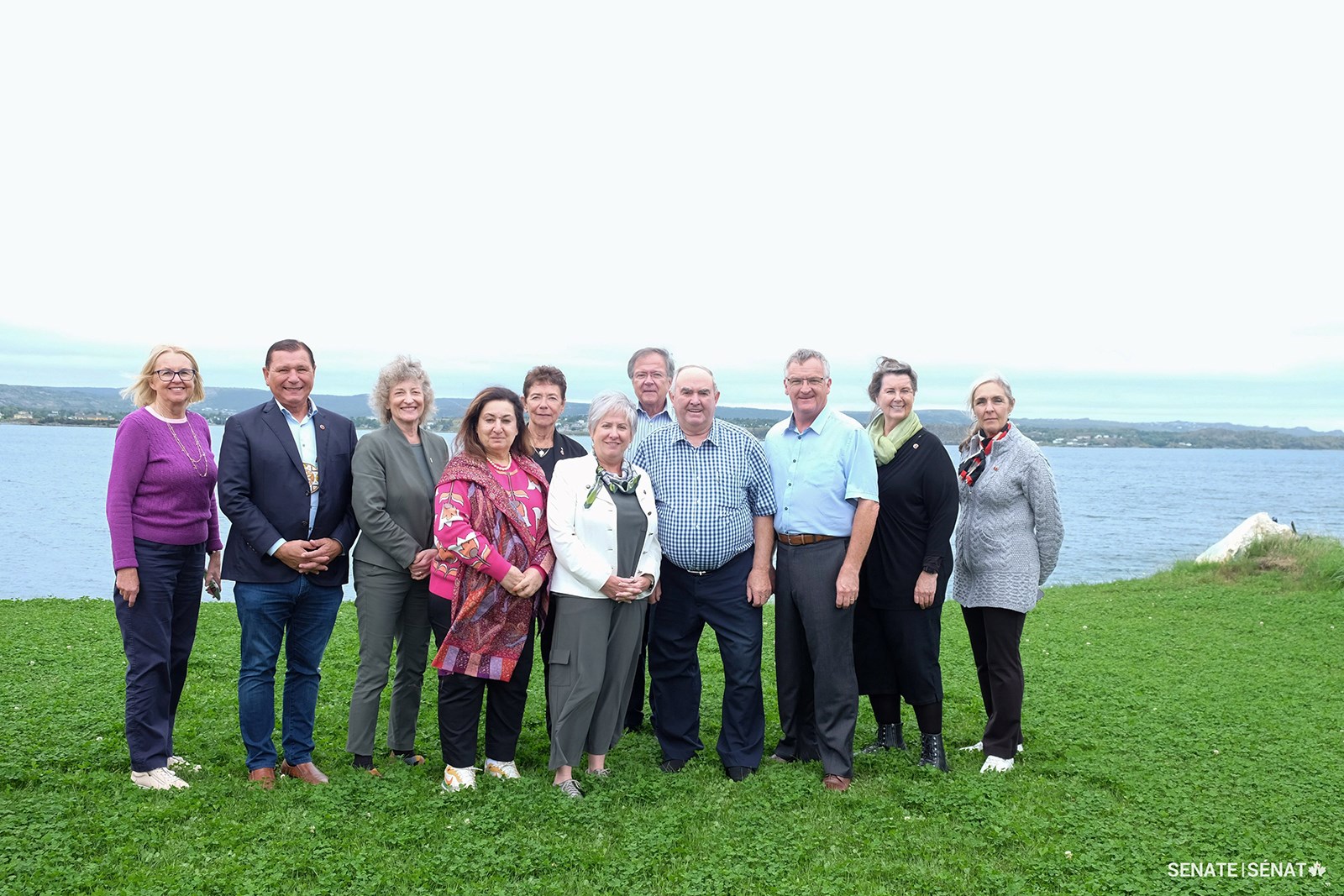
The committee visits Port de Grave to meet with the local harbour authority. From left, senators Jane Cordy, Brian Francis, Pat Duncan, Salma Ataullahjan, Bev Busson, Iris Petten, Jim Quinn, Port de Grave Harbour Authority Treasurer Vernon Petten, and senators Fabian Manning, Marilou McPhedran and Rebecca Patterson.


